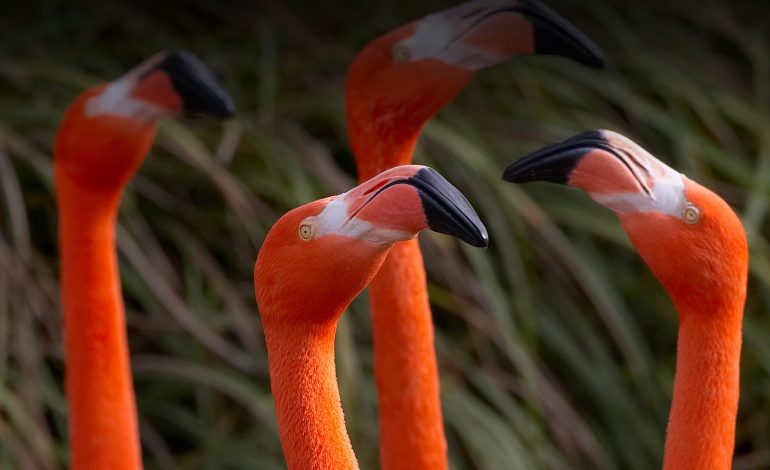New research reveals that flamingos are far more active and strategic feeders than previously believed, the New York Times reports.
By using intricate movements of their heads, beaks, and feet, the birds create underwater vortexes that help funnel prey directly into their mouths.
For years, flamingos have been known for their unique feeding behavior—wading through shallow waters with their heads upside down. However, a recent study published in the Proceedings of the National Academy of Sciences challenges the long-standing idea that these birds are merely passive filter feeders.
Led by Victor Ortega-Jiménez, an integrative biologist at the University of California, Berkeley, the research combined live observations with mechanical models to uncover the hydrodynamic techniques flamingos employ while feeding. The team collaborated with three trained flamingos from the Nashville Zoo, capturing detailed footage of their feeding behavior using high-speed cameras and fluid visualization tools.
The study found that as flamingos rapidly retract and move their heads, they create vortexes—spiral water flows—that lift particles and prey from the bottom. In addition, when the birds chatter their beaks underwater, these mini whirlpools are directed straight into their mouths. Their distinct L-shaped beaks play a crucial role in maintaining these flows.
The research also highlighted how flamingos use their webbed feet to enhance the feeding process. The birds perform rhythmic, dance-like movements that stir up additional vortexes, pushing food particles toward their beaks. These findings suggest that flamingos use their entire bodies to create optimal conditions for feeding, making them highly specialized foraging organisms.
Experts not involved in the study praised its contribution to the field. Sunghwan Jung, a biophysicist at Cornell University, called it “an outstanding demonstration” of how biological movement shapes fluid environments for functional outcomes. Alejandro Rico-Guevara, an evolutionary biologist at the University of Washington, added that the research dispels the myth of flamingos being passive feeders and opens new questions about the evolution of bird anatomy and behavior.
Dr. Ortega-Jiménez now plans to study what happens inside the flamingo’s beak during feeding. He also noted that understanding the principles behind this feeding mechanism could inform the development of technologies aimed at filtering harmful particles like microplastics or toxic algae from water.










The latest news in your social feeds
Subscribe to our social media platforms to stay tuned